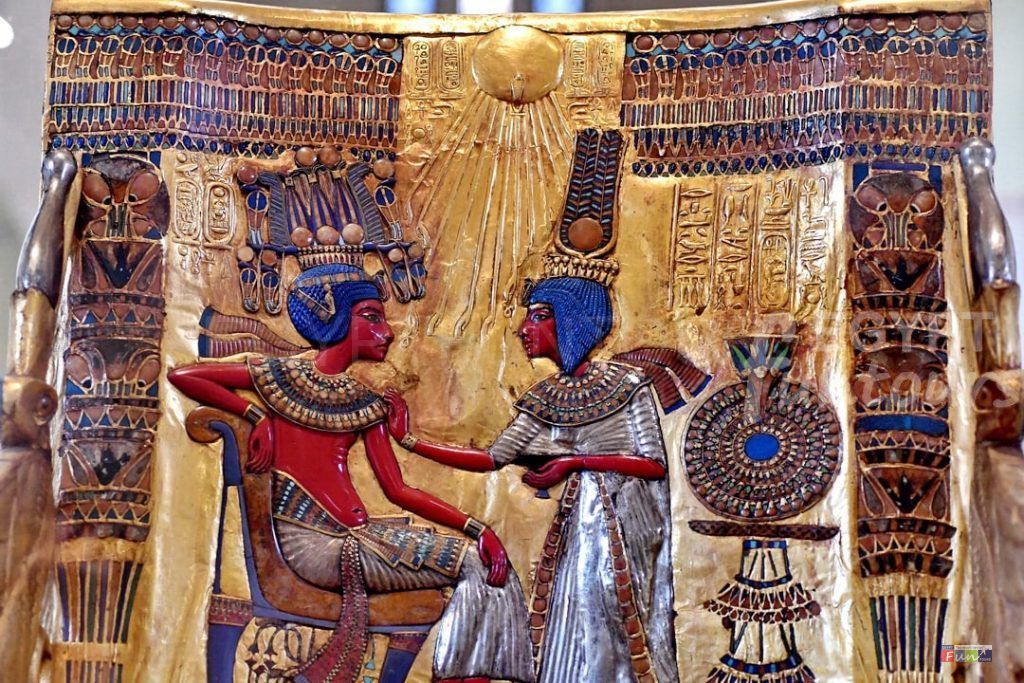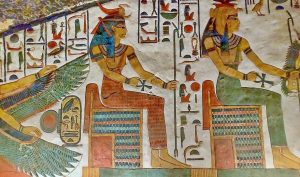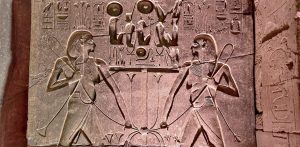Painting, sculpture, architecture, and other arts produced by ancient Egypt’s civilization in the Nile Valley from 3000 BC to 30 AD are examples of ancient Egyptian arts. Painting and sculpture, both highly stylized and symbolic, achieved a high degree in Ancient Egyptian art.
Over three thousand years, Egyptian styles have evolved substantially. Much of the art that has remained from these periods originates from tombs and monuments that depicted scenes of daily life, religious and mundane rituals, as well as the ancient Egyptians’ beliefs in life after death and the preservation of knowledge from the first life.
Paintings and carvings of rare surviving wood, stone, ceramics, drawings on papyrus, pottery, jewelry, ivory, and other creative materials are among the most vivid representations of ancient Egyptian socio-economic systems.
Ancient Egyptian Art Facts

Ancient Egyptian art was incredibly solid, as it was founded on certain divine principles that the craftsmen would never violate, and everything was monitored and well regulated by the head artisan, who double-checked every little detail before completing the work.
Ancient Egyptian art was a one-dimensional art that always showed the face “for example” from the side perspective, while the eyes and shoulders were displayed from the front view and the torso was exhibited from the side view.
The craftsmen, on the other hand, made certain to exhibit every detail in the images and symbols, which posed a challenge to every rule in a magical compromise.
Art Development in Ancient Egypt

Throughout Egyptian history, craftsmen were given orders to create idealized representations of kings and gods that depicted them in a powerful and complete form.
In the Old Kingdom, there were little details in the figures and patterns, but still, the art followed the same rigid laws and principles, but in the Middle Kingdom, there was a modest improvement in the details, with more textures and wrinkles as well as curved lines.
During the reign of King Amenhotep IV, also known as Ekhnaton, the craftsmen achieved a breakthrough, depicting highly lifelike representations of the King and his Princesses. Because Egypt is part of the Great Sahara desert, the stone was frequently employed in the creation of sculptures, temples, and cemeteries.
However, we have discovered several artistic wood and metal artifacts dating from the Old Kingdom, Middle Kingdom, and the New Kingdom.
Comparing the Old Kingdom’s Great Sphinx of Giza with the Middle Kingdom’s Sphinxes of Tanis and the New Kingdom’s Alabaster Sphinx of Memphis reveals only minor differences in features, as previously noted.
Colors in Ancient Egypt

Colors in the ancient Egyptian palette were based on six primary color groups: green (wadj), red (desher), blue (irtyu or khesbedj), yellow (khenet or kenit), white (hedj or shesep), and black. Green was the primary color, followed by red and blue (kem). Mineral compounds were utilized by the ancient Egyptians to add color to their artwork.
The consequence is that many of the colors have retained their vibrancy and beauty thousands of years after they were first discovered. It was constructed of amethyst, garnet, jasper, onyx, hematite, turquoise, lapis lazuli, copper, malachite (a type of copper ore), gold, silver, faience, and shells, among other materials.
Visiting those miraculous attractions while embarking on a Nile River Cruise on the life-giving force and inspiration of ancient Egyptian culture with our Egypt vacation packages is the most effective way to see and compare ancient Egyptian artifacts and enjoy the vivid, stunningly colored items, depictions, and wall paintings that have been survived the time.
Useful links:
- civilization of ancient Egypt
- deluxe tours
- egypt unesco tours
- Best Tourist Attractions
- Explore Egypt Destinations
To comprehend, admire, and learn about ancient Egyptian art, you must visit Egypt.






